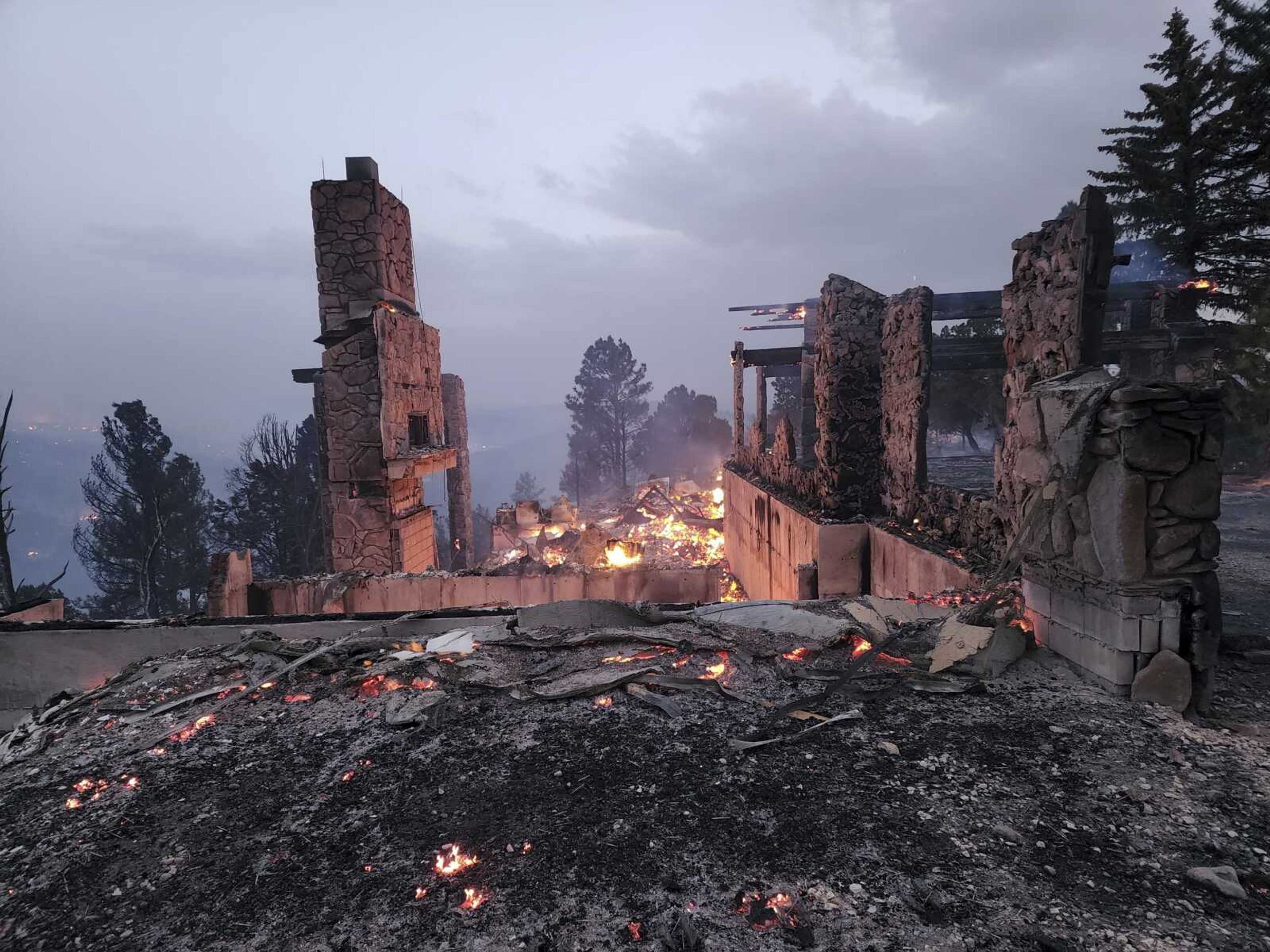New Mexico village seeks prayers as deadly wildfire rages
With towering pine trees and cool mountain breezes, a pocket of southern New Mexico draws thousands of tourists and horse racing fans every summer. It's also a community that knows how devastating wildfires can be. It was a decade ago that fire ripped through part of the village of Ruidoso, putting the vacation spot on the map with the most destructive wildfire in New Mexico's recorded history when more than 240 homes burned and nearly 70 square miles of forest were blackened by a lightning-sparked blaze.. ...
With towering pine trees and cool mountain breezes, a pocket of southern New Mexico draws thousands of tourists and horse racing fans every summer. It's also a community that knows how devastating wildfires can be.
It was a decade ago that fire ripped through part of the village of Ruidoso, putting the vacation spot on the map with the most destructive wildfire in New Mexico's recorded history when more than 240 homes burned and nearly 70 square miles of forest were blackened by a lightning-sparked blaze.
Now, Mayor Lynn Crawford is rallying heartbroken residents once again as firefighters on Friday tried to keep wind-whipped flames from making another run at the village and the hundreds of homes and summer cabins that dot the surrounding mountainsides.
More than 200 homes already have burned, and an elderly couple was found dead this week outside their charred residence. Close to 5,000 people remain evacuated.
Crawford said the village is overflowing with donations from surrounding communities.
"So we have plenty of food, we have plenty of clothes, those kinds of things but we still appreciate and need your prayers and your thoughts," the mayor said during a briefing. "Again, our hearts go out to the family of the deceased, to those that have lost their homes."
Authorities have yet to release the names of the couple who died. Their bodies were found after worried family members contacted police, saying the couple had planned to evacuate Tuesday when the fire exploded but were unaccounted for later that day.
While many older residents call Ruidoso home year round, the population of about 8,000 people expands to about 25,000 during the summer months as Texans and New Mexicans from hotter climates come seeking respite. Horse races at the Ruidoso Downs also draw crowds, as it's home to one of the sport's richest quarter-horse competitions. The racing season was expected to start May 27, and horses that board there aren't in any danger as fire officials use the facility as a staging ground.
Part-time residents have taken to social media over the last few days, pleading with fire officials for updates on certain neighborhoods, hoping their family cabins weren't among those damaged or destroyed.
Authorities said Friday evacuations remain in place and that it was too early to start letting people in to see the damage. They asked for patience as fire crews continued to put out hot spots in the burned neighborhoods and tried to build a stronger perimeter around the blaze.
Incident commander Dave Bales said crews were bracing for stronger winds Friday after having a successful day on Thursday. Helicopters were making water drops, and more engines and firefighters were arriving from elsewhere in the West to help with the effort.
New Mexico authorities said they suspect the fire, which has torched more than 9.5 square miles (24 square kilometers) of forest and grass, was sparked by a downed power line and the investigation continued Friday. Crews also were dealing with toppled trees and downed power lines from the winds that battered the area earlier in the week.
Elsewhere in the U.S., large fires were reported this week in Texas, Colorado and Oklahoma.
Hotter and drier weather coupled with decades of fire suppression have contributed to an increase in the number of acres burned by wildfires, fire scientists say. The problem is exacerbated by a more than 20-year Western megadrought that studies link to human-caused climate change.
The National Interagency Fire Center reported Thursday that since the start of the year, 18,550 wildfires have burned about 1,250 square miles. That's well above the 10-year U.S. average of 12,290 wildfires and 835 square miles burned for the same period.
Connect with the Southeast Missourian Newsroom:
For corrections to this story or other insights for the editor, click here. To submit a letter to the editor, click here. To learn about the Southeast Missourian’s AI Policy, click here.









